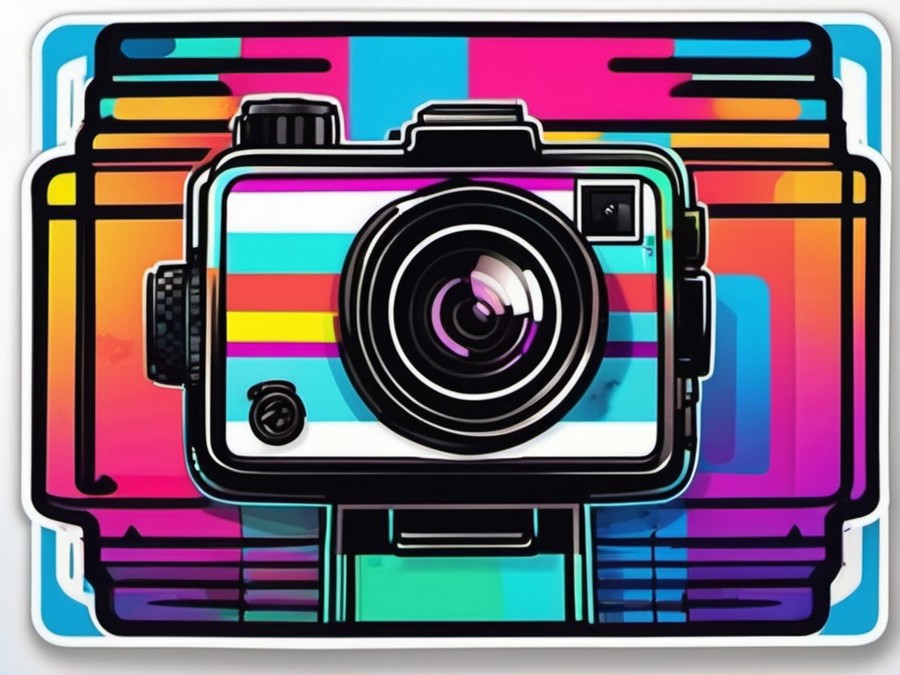· Charlotte Will · Sports & Action Video Cameras · 8 min read
What is 4K Video and Why it Matters for Action Cameras?
Discover why 4K video is essential for action cameras and how it elevates your adventure footage to new heights. Learn about top 4K action cameras, their benefits, and tips for choosing the best one.

Understanding 4K Video Resolution
The Basics of Pixel Count
When you think about the quality of a video, one of the first things that comes to mind is resolution. At its core, 4K video refers to a resolution of 3840 pixels wide and 2160 pixels tall, totalling approximately 8.3 million pixels. This is a significant jump from the standard HD resolution of 1920x1080 pixels, which has about 2.1 million pixels. More pixels mean more detail and clarity in your videos, making every frame sharper and more life-like.
Comparison with HD Resolution
To put this into perspective, let’s compare 4K to the more familiar HD resolution. HD (High Definition) resolution is sharp and clear, but it pales in comparison to the depth and detail offered by 4K. With 4K, you get four times the pixel count of HD, which means you can see every minute detail with greater precision. This is particularly useful in action cameras where the subject is often in motion, and capturing every little nuance can make a big difference.
Real-World Impact of 4K
Imagine you’re on a mountain bike, speeding down a challenging trail. With an HD camera, the video might look good on a small screen, but when you blow it up to watch on a large TV or projector, the details start to blur. With 4K, you can zoom in on specific parts of the video and still maintain clarity, making it perfect for capturing those adrenaline-pumping moments.
The Importance of Resolution for Action Cameras
Capturing Detail in Motion
Action cameras are designed to capture fast-paced activities, whether it’s skiing down a slope or surfing a wave. The higher resolution of 4K allows you to freeze the action and capture every detail. This is crucial for capturing the intensity and emotion of high-speed activities, providing a level of detail that standard HD cameras simply can’t match.
Enhancing Video Quality
Higher resolution isn’t just about capturing more detail—it also enhances the overall quality of your video. 4K footage often looks vibrant and crisp, offering a more immersive viewing experience. This is especially noticeable on larger screens, where the higher pixel density can make a significant difference in terms of color accuracy and contrast.
Future-Proofing Your Content
Technology is always evolving, and what seems cutting-edge today might be outdated tomorrow. By investing in 4K technology, you’re future-proofing your content. Even as display technologies advance and we move towards 8K and beyond, having a higher resolution means your videos will still look great on newer devices.
The Advantages of 4K Video for Action Sports
Improved Depth and Perspective
One of the standout features of 4K video is its ability to capture depth and perspective much better than lower resolutions. This is especially beneficial in action sports where the environment plays a significant role. Whether you’re climbing a rock face or diving into the ocean, 4K can help you capture the entire scene in a way that makes viewers feel like they’re right there with you.
Better Low Light Performance
Action sports often happen in challenging environments, including low-light conditions. 4K cameras are typically equipped with larger sensors and better image processing capabilities, allowing them to perform well in low light. While it might not match the performance of a dedicated DSLR or mirrorless camera, the improved low-light capabilities can make a substantial difference in capturing clear footage even in dimly lit situations.
Enhanced Post-Production Flexibility
For those who like to edit their videos, 4K provides a wealth of flexibility. The high resolution means you can crop and zoom without losing quality, allowing for creative editing options. Additionally, 4K footage retains more detail, which can come in handy when applying effects or stabilizing shaky footage.
Top Action Cameras Offering 4K Capability
GoPro Hero Series
The GoPro Hero series is a staple among action camera enthusiasts, and for good reason. Many models in this series, including the Hero9 Black and Hero10 Black, offer 4K capabilities at high frame rates. They’re known for their rugged build, excellent image stabilization, and a range of accessories that make them versatile for any adventure.
DJI Osmo Action
The DJI Osmo Action is another powerhouse in the action camera market. It offers 4K recording at up to 60 fps and comes with a front-facing screen, which is perfect for vloggers. The camera also features RockSteady stabilization, ensuring smooth footage even in the most dynamic environments.
Sony FDR-X3000
For those who prefer a more traditional camera design, the Sony FDR-X3000 is a solid choice. It offers 4K recording capabilities and comes with a high-quality Zeiss lens for exceptional clarity. The camera also features built-in image stabilization and a rugged, waterproof design.
Factors to Consider When Choosing an Action Camera for 4K Video
Frame Rate and Shooting Modes
When choosing an action camera for 4K video, one of the first things to consider is the frame rate. Frame rate refers to the number of frames per second (fps) that the camera can capture. Higher frame rates mean smoother video, which is especially important for action sports. Look for cameras that offer 4K recording at high frame rates like 60 fps or higher.
Battery Life and Storage
Action cameras can be power-hungry, especially when shooting in 4K. Make sure to check the battery life of the camera and consider bringing extra batteries if you plan on shooting for extended periods. Additionally, 4K files are large, so ensure your camera has sufficient storage capacity or the ability to easily expand it.
Durability and Weather Resistance
Action cameras are often used in harsh environments, so durability is key. Look for cameras that are waterproof and shock-resistant. Many high-quality action cameras come with a rugged design that can withstand drops, extreme temperatures, and water submersion.
Advanced Features
Modern action cameras come with a range of advanced features that can enhance your video quality and shooting experience. Look for features like image stabilization, which helps to reduce shakiness in your videos. Some cameras also offer slow-motion recording, time-lapse modes, and even built-in GPS for tracking your adventures.
Real-Life Examples of 4K Action Cameras in Use
Adventure Sports and Outdoor Activities
From climbing mountains to exploring underwater worlds, 4K action cameras are a staple among adventure sports enthusiasts. Athletes use these cameras to document their adventures, share their experiences with others, and even analyze their performance. The high resolution ensures that every thrilling moment is captured in vivid detail.
Professional Filmmaking
The quality of footage captured by modern action cameras has made them popular among professional filmmakers. 4K resolution allows for high-quality B-roll that can be seamlessly integrated into larger productions. The portability and ruggedness of action cameras also make them perfect for getting unique shots in hard-to-reach locations.
Everyday Content Creation
You don’t have to be a professional athlete or filmmaker to appreciate the benefits of 4K action cameras. Whether you’re documenting a family vacation or creating content for social media, these cameras can help you capture memorable moments with exceptional clarity. The ease of use and portability of action cameras make them perfect for everyday content creation.
The Future of Video Resolution in Action Cameras
Emerging Trends and Technologies
As technology advances, we can expect to see even higher resolutions in action cameras. 8K is already on the horizon, offering four times the resolution of 4K. However, it’s not just about the number of pixels. Future cameras are likely to incorporate advanced AI and machine learning capabilities, improving everything from image quality to video stabilization.
Impact of AI and Machine Learning
AI is already making its way into consumer electronics, including action cameras. Advanced image processing algorithms can enhance the quality of your videos in real-time, improving color accuracy, contrast, and even reducing noise. As AI continues to evolve, we can expect cameras that are not only smarter but also more intuitive and user-friendly.
Consumer Preferences and Market Direction
The market for action cameras is continually evolving based on consumer preferences. As more people become interested in capturing high-quality video, there is a growing demand for cameras that offer superior resolution and advanced features. This is driving manufacturers to innovate and provide products that meet the needs of a wide range of users, from casual hobbyists to professional filmmakers.
Conclusion
In the world of action cameras, 4K video is more than just a buzzword—it’s a game-changer. The higher resolution offers significant advantages in terms of detail, quality, and future-proofing your content. Whether you’re a seasoned adventurer or someone who simply enjoys capturing memorable moments, investing in a 4K action camera can help you capture life in all its glory.
FAQs
What are the common misconceptions about 4K video? Many people believe that 4K is only necessary for those with high-end TVs or monitors. However, the benefits of 4K extend beyond just display size; the higher resolution provides more detail and flexibility in editing.
How does 4K compare to other high-resolution formats like 8K? While 8K offers even more detail, it’s important to consider factors like storage requirements and processing power. For most users, 4K strikes a good balance between quality and practicality.
What are the best settings for shooting 4K video on an action camera? The optimal settings can vary depending on the specific model of your camera. Generally, you’ll want to use the highest frame rate possible while ensuring that any image stabilization features are enabled.
Can older devices play back 4K footage effectively? Older devices may struggle with 4K playback due to limitations in processing power and screen resolution. To get the best experience, consider using a modern device with 4K capabilities.
What are some tips for editing 4K video to maintain quality? When editing 4K video, it’s important to use software that supports high-resolution footage and to ensure that your computer has enough processing power. Also, consider exporting your final video in a format that balances quality and file size.




